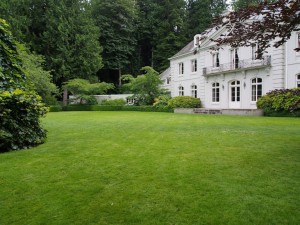Pacific Northwest Lawn-Care

Begin mowing: Allow your grass to grow no more than 3 inches tall before you start mowing. The best general rule to follow is that you want to keep most grass types at least 2 inches tall — this height helps the grass ward off weeds and withstand summer drought. But you don’t want to remove more than a third of the total grass height at any one mowing. Removing too much stresses the grass.Apply fertilizer: If you feed your lawn a couple times a year, a light application of lawn fertilizer in spring helps get your grass off to a great start. Wait to fertilize until your lawn needs mowing for the first time. Do a light application and use a slow-release or organic fertilizer; don’t try to feed your lawn for a quick green-up; this doesn’t usually work and can harm your grass.Attack grubs: If lawn grubs are an issue in your lawn, prevent further damage by applying grub control product that continues to work throughout the season. The best time to do this is in early June.Mow as needed: Because most grasses in this region like it cool, they won’t grow as fast when temperatures go over 80 degrees F. During hot, dry periods, it may only need mowing once every two or three weeks (wait for it to grow about 3 inches tall). In cooler, moister weather patterns, mow enough to keep it from getting more than 3 inches tall — that could be every week or more than once a week.
Water wisely: Allow your grass to take a summer nap during hot, dry weather if you don’t mind it turning brown. When the rains come again, it’ll go green and start growing again. If you don’t like the look of a brown lawn, select drought-tolerant types such as buffalograss or plan on giving your lawn about 1 inch of water a week.
Fall feedings: If you only fertilize your lawn once a year, autumn is the best time to do it. In fact, your lawn would appreciate a light application of fertilizer in early fall and again in late fall.
Aerate: If you didn’t aerate in spring and your lawn needs it, fall is a great time. Don’t overlook the importance of aerating. It’ll help your lawn thrive.
Continue mowing: As temperatures cool, your lawn will grow faster again. Keep mowing regularly through the end of the season.
